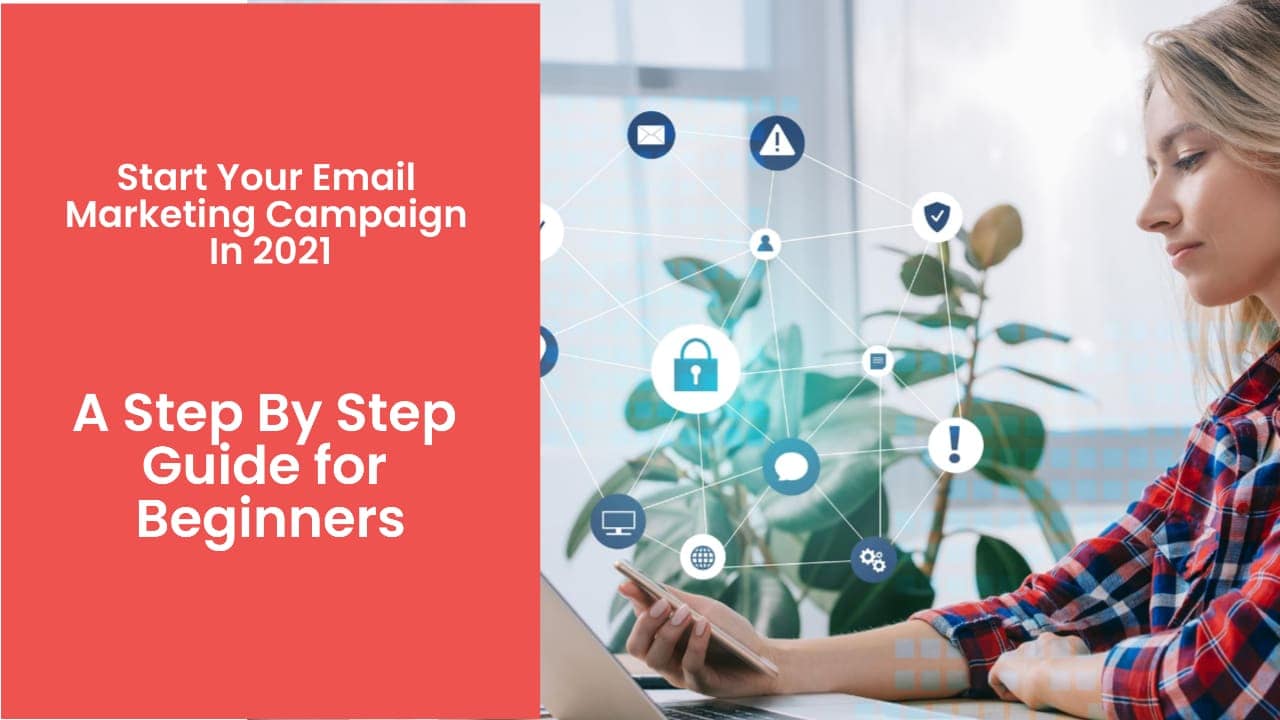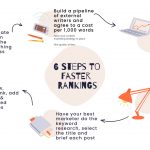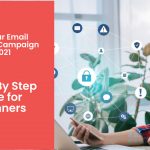Table of Contents
First things first, what is email marketing?
Simply put, email marketing is the process of sending relevant and targeted emails to your audience or customers. The content you send could be informative, promotional, or sales related depending upon your email marketing campaign goals as well as your overall marketing goals.
The essence is to send content that adds value and builds trust with your audience.
Starting an email marketing campaign
Clearly define your email marketing goal
The first and foremost thing is to be clear on the goals. Clearly define what it is that you’re trying to achieve with your email marketing efforts.
Typical email marketing goals include:
- Traffic for your website
- Leads for your business
- Customers for your product, or
- Nurture existing leads and move them deeper into the sales funnel
- Send updates about an upcoming product
- Up-sell or down-sell on another product
- Drip them on the features of your product
Also, establish a specific time frame by which you plan to achieve that goal. It will help you put your email marketing efforts in the right direction.
Define your target audience and buyer personas
Understand who is it that you’re going to target. Maybe it is a specific market, or people holding a particular position in your target companies.
Start by building clear buyer personas of your target audience or customers. Spend time understanding their
- Demographics
- Goals and values
- Sources of information
- Challenges and pain points
Understanding these early-on could save you lots of rework in the later steps of your email marketing campaign.
Set up your ESP
Email Service Provider (ESP) plays a vital role in email marketing. The right ESP will make it easier for you to build email lists and send targeted emails at the right time.
At barebones, ESP needs two things: a database to store email lists and the ability to send emails. But if you’re serious about your email marketing, consider getting some extra features that will make it easier for you down the lane.
More advanced features of an ESP include:
CRM
- With CRM, you can integrate email marketing with other aspects of your business. Like tracking your prospect’s stage of awareness or their customer journey after they buy your product. The right CRM ensures that you send timely and relevant emails to your customers.
- Understanding what your audience is interested in is the key to better email marketing. The right CRM allows you to segment your email lists by your audience’s interests. The worst thing you could do is send emails that don’t add any real value to your contacts.
- A typical CRM will also provide you with website tracking functionality, so you could easily track your customer actions and understand their intent and stages of awareness.
Email Marketing Automation
You’ll have to automate lots of your email marketing efforts. You can’t be sitting all day in front of your ESP, trying to do everything on your own. Typically, automated emails include
- Autoresponders to send opt-in emails, order confirmation emails, and relevant content when the user visits a page on your website.
- Drip emails when they have become your customers, to drip them on the product walkthroughs and functionality.
- Trial expiry emails, payment reminders emails, or weekly updates to keep your contacts in the know.
Landing page and lead capture form builders
Your ESP should also have a landing page and lead capture form builder to send all your leads, prospects, and customers directly into your CRM with appropriate tags.
Email Designer
You’d also need an email designer to design eye-soothing emails with the right images that look good in all device resolutions.
A/B testing module
A/B testing helps you understand what resonates with your email subscribers. More on this later.
Tip: Two popular ESP’s are ActiveCampaign and HubSpot. Check them out to see if they are a good fit for you.
Add an opt-in form on your website or landing page
Now, when you’re done with setting up your ESP & CRM, you need to create a signup form that allows visitors to join your email list.
Add this form where your visitors are most likely to see it. It could be at the bottom of the best performing blog posts, or it could be on a landing page where you’re bringing most of your paid or social traffic.
Add a lead magnet
Although many of your email list sign-ups depend on your target audience and how well they know you, if you could offer a special incentive right beside your sign up form, you increase the chances of a visitor signing up drastically.
The special incentive could be an ebook or some how-to guide. It could even be as simple as a checklist that helps them get something done. You’ll need to understand what works for them. Your buyer personas will come in handy here.
Try out different incentives like a free consultation or website audit. If you’re giving content, try various forms of presentation. An engaged audience might prefer a checklist or an audio version, whereas others might prefer ebooks or some free giveaways.
Also, test out different copy variations on your lead capture form so that you know what makes your audience give away their email the easiest.
Get explicit consent
You should have explicit consent from everyone in your email list to send them emails. Failing to do so could incur severe penalties for your business as per the CAN-SPAM act.
Initially, if you don’t have permission, it’s always a good idea to get it in successive emails.
Set clear expectations
Often an underlooked step in email marketing, setting clear expectations with your contacts from the beginning will make your relationship more fluid. So, just after the opt-in email, share the details on how frequently you’ll be sending them the emails and the kind of emails they could expect.
If possible, tell them the days of the week on which they will be getting emails from you. Doing this removes a lot of uncertainty and builds up anticipation, leading to a higher open rate down the lane.
Nurture your leads
One of your goals as an email marketer is to nurture your leads and, at the same time, lead them deeper into the funnel. Simply put, you are taking charge of their customer journey.
Start by understanding the stage of awareness your contacts are in, in their buyer journey. Doing this will ensure that you send timely and relevant emails that help your contacts solve their problems.
The benefit of this approach is two ways:
- Your email list will get used to receiving valuable emails from you.
- Gradually they’ll develop trust in you, which means more customers in the long run.
Plus, when your audience consistently opens and engages with your emails, it increases your email account’s reputation. Why does that matter? Higher reputation means more emails will go into inboxes and will trigger spam filters less often.
Write click-worthy subject lines
The subject line of your email is the first thing people will see when they get your email. Spend time thinking and coming out with a click-worthy subject line.
Take help from a copywriter or use proven formulas to write them. Ensure that you don’t write a subject line that misguides people from what’s in the email. Doing so could hurt your emails’ reputation, reduce your audience’s trust in you, and even land your emails in the spam. And as an email marketer, that’s the worst thing you can do.
A general tip is to structure your subject lines so that they are
- Specific
- Simple
- Credible
- Clearly communicate what’s in the email
- Promises to solve their problems/ reduce their pain
Focus on body copy
The next thing you need to do is write an excellent body copy. A superb body copy means more clicks and more conversions.
Typically, the goal of the body copy is to connect with people and provide some tangible value. While writing your body copy, you need to be clear and specific about the outcome you want from the reader when he finishes reading.
You can adopt different approaches to make your copy more appealing, like telling a story, entertaining them, or painting a vivid picture of their improved life after buying your product.
The key is to avoid vague sentences that convey no real value and puff up the writing.
Lastly, include a call-to-action (CTA) and be specific. CTA is what you want the reader to do next.
Some typical examples include
- Read more on the blog
- Download your personal copy
- Take a free tour
- Claim your exclusive
Although you can spread the CTA multiple times in the body copy, make sure the action you want your reader to take is one per email. Failing to do so could confuse your reader, and you could miss out on the clicks.
Focus on the email footer
Add your physical location and an unsubscribe button in the footer of your email. It is necessary to send promotional emails. Failing to do so could lead your email into a spam box.
Measure the results
After you’ve sent your email, wait for a day or two to allow your ESP to collect the campaign data.
Look at the data and try to identify patterns.
Positive engagement includes metrics such as opens, clicks, conversations started (people who replied), and conversions (the completion of your goal).
Negative engagement includes metrics such as bounced emails and unsubscribes.
These are the typical patterns each metrics indicates:
- A less open rate likely means that either your email triggered a spam filter or you didn’t write a click-worthy subject line.
- Less click-through rate likely means that either your body copy failed to convert or your CTA wasn’t clear enough.
- More bounce rates indicate that people used ghost emails to sign-up for your email list. Maybe the users just signed up for the incentive.
- More unsubscribe rates mostly indicate that the content was no longer relevant to them.
Next Steps
Perform A/B testing
A/B testing or split testing means that you take two slightly different versions of an email and send them to a percentage of your email list to find out what resonates well with them. Then, the better performing version is sent to the rest of the list.
Another mistake people make in A/B testing is trying to test more than two versions simultaneously. Doing so makes it difficult to find a clear distinction between what works and what doesn’t.
Most ESPs provide an inbuilt A/B testing module, which could automatically do all the testing work for you.
If your ESP doesn’t provide you with A/B testing functionality, no worries. You could do it yourself by manually sending emails to two lists and later checking stats.
Another misconception is that A/B testing is a one-go work. No, it isn’t. You need to perform A/B testing regularly since your email list keeps changing over time. New contacts will subscribe, and some previous contacts will opt-out.
Segment your email list
Segmentation is the process of dividing your email list into multiple smaller lists to send relevant and highly targeted emails to your contacts.
There are three primary ways you could segment your email lists by
Buyer personas
In this, you segment your email list based on age, gender, location and demographics, goals and values, challenges, and pain points.
Buyer journey
Here, you segment your email lists based on where your contacts are in their buying journey or their stages of awareness in the funnel.
Sign up source
The signup source could give you great insights into the content they are interested in or the solutions they are looking for, which could help you send more relevant and targeted content.
Additional Tips
Engage more with your active contacts
These are the people who open almost all your emails and frequently click through. These people are your supporters. You should occasionally come out with campaigns to take their engagement to the next level.
You could send them some exclusive free gifts or discount coupons, invite them to your affiliate programs or share some new/beta products before launch at a discounted price. It’s a win-win. You would increase their loyalty by making them feel appreciated, and they would help you get the word-of-mouth out in public. You will also gain valuable feedback and what works and what doesn’t.
Try to increase the engagement of less active contacts
These are people who open your emails less often. Maybe you can ask them to update their email preferences, like allowing them to opt-in to a weekly digest instead of a daily email. This way, they could catch up on everything with one email for the week and check the content they are interested in on your website.
Follow up with inactive contacts
These are the people who rarely open and click through your emails. You could ask them if they are still interested in hearing from you or if they would like to update their preferences. If they still don’t react, you could segment them into a separate list and communicate less often, or altogether remove them from your contacts.
And removing people from your contacts isn’t a bad thing to do. It helps you in multiple ways, like a lower bill from your ESP and increased attention to engaged subscribers.
Final Words
Email marketing is just about building great relationships with your contacts. It doesn’t happen in a day. Time, effort, consistency, and a genuine desire to help are needed.
And don’t get distracted by the best practices all over the internet. Your contacts might be very different. Your job is to find out what works for you. Keep sending helpful content, segment your lists, and test and analyze what works and what doesn’t.









This is the most comprehensive article I found today. Thanks man!
Hey Akash, thank you so much. I’m glad it helped you.
Crafting efficient decks in alpine regions requires a thoughtful approach to space utilization that exceeds standard considerations. While choosing compact furniture is vital, integrating dual-purpose elements and smart storage solutions comes forth as key approaches for enhancing constrained deck areas in the challenging mountainous environment. Participants in the forum are urged to contribute individual design ideas that have proven productive in making the most of limited deck spaces. This collaborative exchange extends to creative storage solutions, highlighting original approaches to address the challenges of restricted space. Individual success stories become a spring of encouragement for forum members striving for to upgrade their outdoor living areas in the distinctive context of mountainous environments. Through this active conversation, the community together gains knowledge that contribute to developing functional, visually appealing, and compact decks amidst the awe-inspiring landscapes of alpine regions.
[URL=https://fortcollinsdecks.com/ – Custom backyard decks
Wow that was odd. I just wrote an very long comment but after I clicked submit my comment didn’t show up.
Grrrr… well I’m not writing all that over again. Anyhow, just wanted to say superb blog!